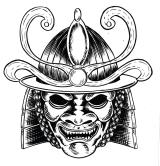Your Questions, My Answers about Jeet Kune Do
What will I learn?
In Contemporary Jeet Kune Do, you will learn to fight in all four ranges of combat: kicking, punching, trapping, and grappling. In kicking range, you will primarily use kicks from Muay Thai and Savate. In punching range, you will use mostly western boxing. In trapping range, you will learn a blend of Wing Chun Kung Fu and Kali. You will learn that the most devasting techniques in a fight are knees, elbows, and head butts. In grappling, you will learn Brazilian Jiu Jitsu along with Kino mutai, the Filipino art of systematic biting and eye gouging. When put together, these two arts enable you to own the ground.
Is training dangerous?
No, training is safe. Our methods enable you to learn the art without being injured in the process. It would do little good for someone to train in the martial arts and get injured and then not be able to protect himself or herself. You will not get deformed hands or ears with our training method. While the techniques are the same as taught to Seal Team 6, the process is different. If you get tired, we will rest. The art will conform to you. This is why you can practice this art at 80 years young.
How long will it take before I can defend myself?
While this answer varies, generally one can expect to become proficient to handle most street encounters in less than a year. Some have demonstrated that ability in 30 days. However, you are allowed to progress at your own pace. We will not hold you back, nor will we push you forward. The training is part of the process of self learning. While the physical techniques can generally be learned in a year, the advanced emotional and spiritual side of the art can take years.
How long would it take to become an instructor in Jeet Kune Do?
From Sigung Vunak's web site:
"To understand our ranking system, you first need to understand the methodology of learning Jeet Kune Do. It has everything to do with the process, and little to do with the product! In other words, one becomes proficient in JKD through the process of self-discovery...and self-discovery is fueled by the process of teaching. This mentality started when Bruce Lee first came to America; he had his mother art of Wing Chun, but after discovering certain limitations he would essentially experiment on his students by teaching them. This gave him people to train with - absolutely crucial for him to develop! Dan Inosanto is the main link between us and Bruce's principles and concepts. After Bruce passed away Dan was left with the mantle of "Jeet Kune Do" on his shoulders. In order for him to continue the growth of the art, he opened up the Filipino Kali Academy. This school was like no other; we were basically a giant garage full of hard-core students."
"After roughly ten hours of very intense one-on-one training with me, I usually award an apprentice instructorship. This does not mean that these individuals are qualified Jeet Kune Do instructors! It simply means one has our blessing to teach what he or she knows, and to grow from the experience. (Hence the term "apprentice.") After roughly fifty hours of private instruction with me (or 2-5 years of training in a group setting, and depending on skill and other factors), an apprentice will receive the first official rank of instructorship, Phase One Instructor. At this point, after several years of dedication to learning, to Dan Inosanto and to PFS, a Full Instructorship is awarded. All of my full instructors must not only have the physical side of the art groomed well, but the mental and emotional sides as well."
As you can read, the journey to "Full Instructor" can be a long journey. However, it is a good journey. One that leads to peace and harmony with others.


